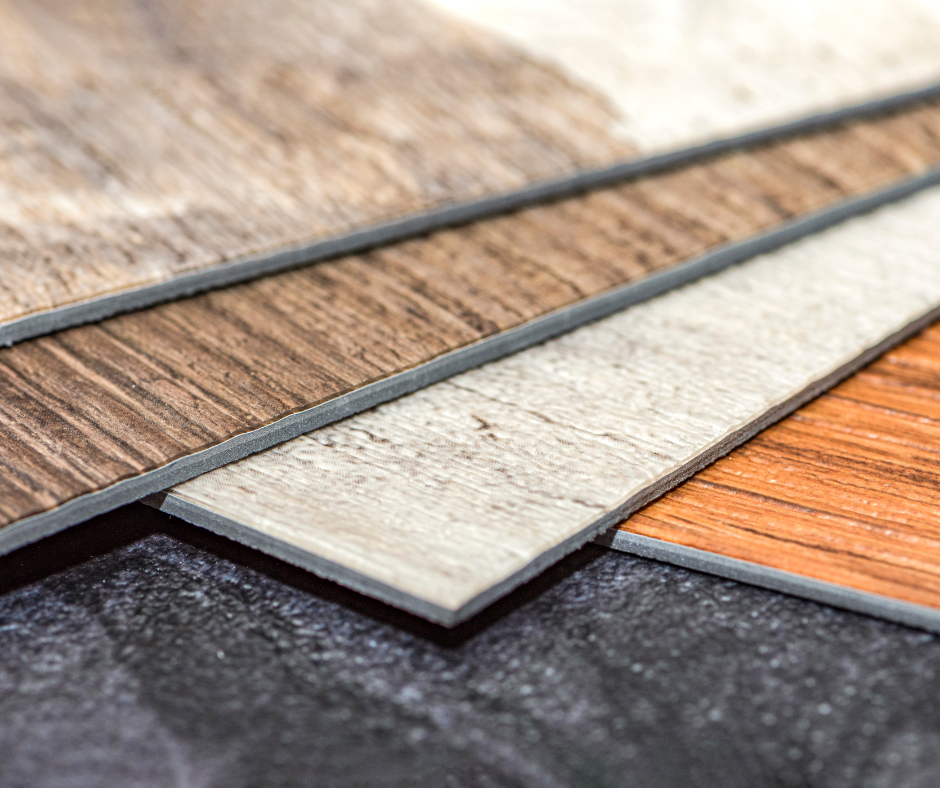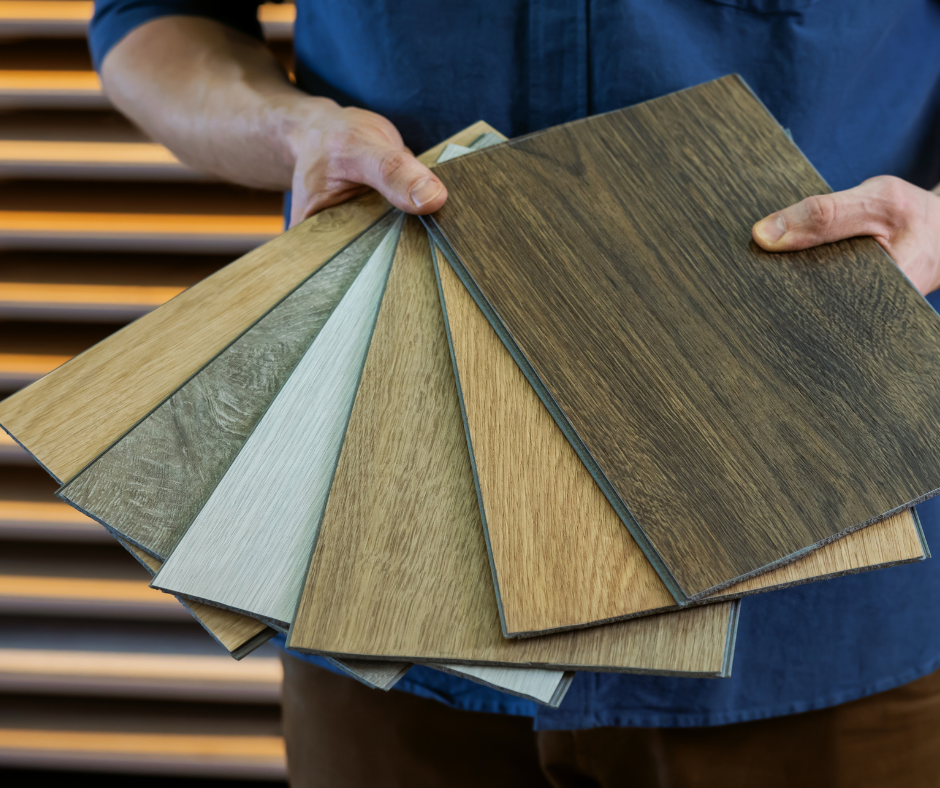Looking to give your stairs a modern upgrade without the hassle of a full renovation?
How to install LVP stair treads is simple: clean your steps, measure and cut each plank, apply adhesive, and press the treads into place—no special tools or professional help needed.
This quick DIY solution offers the perfect alternative to carpet stair treads, combining sleek style with durability and easy maintenance.
In this guide, you'll learn exactly how to handle each step with confidence, from prep to finishing touches.
Whether you're replacing old carpet or starting fresh, LVP gives your stairs a high-end look that holds up to daily wear.
Keep reading to explore pro tips, common mistakes to avoid, and how to choose the best design for your home.
What Are LVP Stair Treads?
Luxury vinyl plank (LVP) stair treads are custom-cut planks made to fit each individual stair.
Unlike traditional stair runners that sit on top of the step, LVP treads cover the entire surface—including the stair nose—creating a clean, continuous look from top to bottom.
They’re designed to mimic the look of real hardwood, stone, or even ceramic finishes, while offering superior resistance to moisture, scratches, and wear.
This makes lvp stair treads a popular option in homes with kids, pets, and plenty of foot traffic.
And because they're designed to be DIY-friendly, homeowners can often complete installation in a single weekend.
Why Homeowners Choose LVP for Their Stairs
When homeowners think about modernizing their staircase, they often weigh several factors: cost, maintenance, safety, and design.
LVP meets the mark across all of them.
Here’s why:
-
Built to Last: Whether it’s muddy shoes, playful pups, or toddler traffic, lvp stair treads are built tough. They're scratch-resistant and stain-resistant, keeping their good looks for years.
-
Water Resistant: Unlike traditional wood, LVP doesn’t warp or swell when exposed to moisture. This makes it a perfect fit for households where spills (or wet paws) happen regularly.
-
Slip Resistant: Many styles of LVP come with textured surfaces to reduce slipping—an important safety feature for staircases.
-
Budget Friendly: You get the elevated style of hardwood without the hardwood price tag.
-
Low Maintenance: No polishing, sanding, or refinishing required. Just sweep, mop, and go.
-
DIY Friendly: Designed for easy cutting and straightforward installation, LVP makes for a satisfying weekend home project.
Exploring Design Options: LVP Stair Treads Style Types
One of the biggest benefits of choosing luxury vinyl is the wide range of available styles.
With lvp stair treads style types ranging from rustic wood tones to clean stone patterns, you’re sure to find a match for your home’s personality.
Here’s a look at some of the most popular style types homeowners love:
-
Wood-Look Treads: Mimic the look of oak, hickory, maple, or walnut. Perfect for traditional, farmhouse, or rustic spaces.
-
Stone-Inspired Finishes: Slate, travertine, or marble-inspired designs bring a sleek, contemporary vibe to any staircase.
-
Modern Neutrals: Cool grays, soft beiges, and minimal patterns are ideal for modern or transitional homes.
-
Patterned Options: Some advanced LVP options feature subtle patterns or directional grain that can add depth and uniqueness to your stairs.
Each of these lvp stair treads style types is crafted with a high-resolution finish, giving you the beauty of natural materials without the high maintenance.
If you’re unsure which style will work best, many companies—including Oak Valley Designs—offer sample swatches so you can test colors and finishes in your own space before committing.
Can You Install LVP Stair Treads Yourself?
Absolutely.
One of the main reasons homeowners love LVP is that it's designed to be installed without the need for a contractor.
With a bit of preparation, some simple tools, and a little patience, you can handle the installation on your own.
DIY not only saves money but also gives you complete control over the final look and finish.
Plus, it’s a project you can feel proud of every time you walk upstairs.
Step-by-Step: How to Install LVP Stair Treads
Ready to roll up your sleeves?
Here’s a clear, easy-to-follow process for how to install LVP stair treads and get professional-level results:
Step 1: Prep Your Stairs
Start by removing any existing flooring like carpet, staples, nails, or glue.
Clean the surface thoroughly.
Any dirt or debris will interfere with the adhesive and prevent a proper bond.
Ensure each stair is level and dry.
Use a leveling compound to smooth out dips or cracks if needed.
This is your foundation—get it right, and the rest becomes a breeze.
Step 2: Measure Each Step
Measure the width, depth, and overhang (also known as the stair nose) of each stair.
Even if your stairs look uniform, small differences can occur—so measure every tread individually.
Accuracy here ensures a seamless, snug fit.
Step 3: Cut the Treads
Use a utility knife, table saw, or miter saw to trim your lvp stair treads to size.
Cut slowly and carefully, especially if you’re working with matching stair nose pieces.
Clean cuts are key to a polished final look.
Step 4: Apply the Adhesive
Use a high-quality adhesive that’s specifically designed for LVP or vinyl stair treads.
Spread it evenly across the back of each tread using a notched trowel.
Avoid applying too much—it should create a firm, consistent layer without squeezing out the sides.
Step 5: Place the Tread
Starting from the back of the step, lay the tread into place and press it forward.
Make sure the nose is tightly aligned and flush with the stair edge.
Press firmly across the entire surface to ensure good contact with the adhesive.
Step 6: Secure the Edges
Although many LVP treads hold well with adhesive alone, you may want to reinforce the stair nose with brad nails or finishing nails.
This is especially helpful in high-traffic areas or homes with lots of stair use.
Step 7: Let It Set
Repeat the process for each stair.
Once finished, allow the adhesive to fully cure—usually about 24 hours—before using the stairs.
Common Questions About LVP Stair Tread Installation
Do I need to remove the stair nose molding before installing?
Yes, most installations require removing any existing nose trim so the LVP stair nose piece can be flush and secure.
Can I install LVP over existing stairs?
Yes, as long as the surface is smooth, clean, and level.
You can install directly over wood, concrete, or previously finished stairs.
Should I use stair nose molding?
For most installs—yes.
The stair nose helps reduce wear and adds a finished, professional look to the tread.
Is this safe for kids and pets?
Definitely.
LVP is a great option for families.
It's easy to clean, non-slip (when textured), and resists messes and scratching.
Installation Tips from the Pros
-
Test Fit First: Lay each tread in place without adhesive to make sure sizing and alignment are right.
-
Use a Roller: A heavy-duty flooring roller helps press the tread into the adhesive for an even stronger bond.
-
Work in Good Lighting: Shadows can trick your eye—use bright, even light to ensure clean cuts and straight lines.
-
Don’t Rush: Give yourself time and work one stair at a time. It’s better to go slow and get it right the first time.
Steps to Success
Installing LVP stair treads is a smart investment that blends form and function beautifully.
Not only do you get a stunning upgrade for your home, but you also enjoy the long-term benefits of easy maintenance, increased safety, and long-lasting style.
Whether you’re drawn to the warmth of wood-look finishes or the cool elegance of stone-inspired textures, there’s something for every staircase within the wide range of lvp stair treads style types available.
At Oak Valley Designs, we’re here to help every step of the way—from choosing the perfect tread to ensuring your install goes smoothly.
Because we believe every stair in your home should feel like it was made just for you.
Ready to Elevate Your Stairs?
Oak Valley Designs specializes in premium stair solutions that bring craftsmanship, comfort, and style into every home.
Shop our collection of lvp stair treads, landing rugs, and hallway runners—all proudly made in the USA and designed for DIY ease.
-
Website: https://oakvalleydesigns.com/
-
Phone: 706.331.0315
-
Email: info@oakvalleydesigns.com
-
Address: 30 River Ct SW Bldg E Cartersville, Ga 30120



